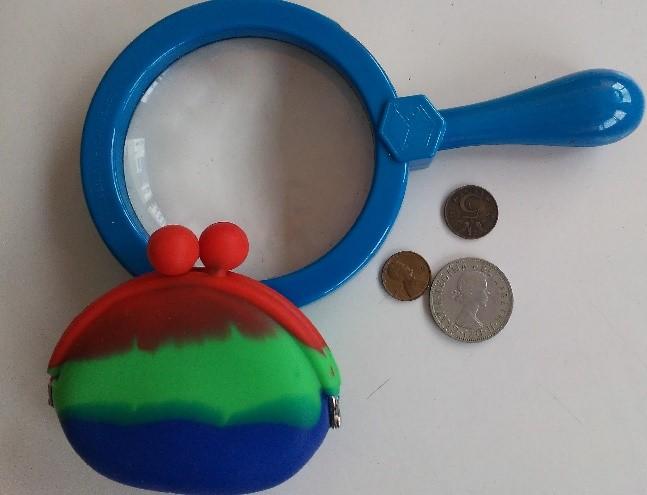Cross Curricular

Coins are everywhere. A child's first contact with money is often linked to the cold feel of metal, alongwith the jingle jangle of this new treasure in his or her pocket. Many families have them from past journeys or a relative's keen collecting. They serve as the inspiration for a complete lesson, either in Social Science or English. While children begin studying coins and notes in the second year of Primary, this activity really piques their interest from fourth year onward, perhaps because they start to handle pocket money more at that age.
First, a challenge
The classic guessing game of how much is in a purse serves as a perfect warmer. Of course, those estimating the amount have to know what kind of coin is being used. We allow them to ask questions that can be answered yes or no, but only yes or no. Are they the same kind of coin? Yes, they are. Are they in euros? Yes, they are. Are they brown? No, they aren't. Are they gold?
In the end, the purse used in You First Language Centre contained 6.40€ in 20 cent coins. How many coins is that? How can we count them quickly to check?
Another warmer is to have one of each coin from the local currency in a purse. How many coins would that be? And how much money is that? Basic maths comes into play, as does language.
Reconsidering coins
Hypotheses can and should be made outside the Natural Science classroom. What is more, we can take a closer look at what we think we are already familiar with. Commonplace things are seen in a new light. How well do we know coins? Can we think of statements that are true of all coins? Are they all made of metal? Small? Round? One student in fourth year of Primary at Lestonnac Ferrol (Galicia, NW Spain) came up with twenty-four ideas in a single lesson. In a Primary and early Secondary English class, these are put into two lists to reinforce sentences with the verb to be and the verb to have: complex ideas in simple language.
Testing our ideas
Here comes the fun part. We look at some coins to see if we are right. At You First Language Centre, we have a variety of coins, including square (!) ones. We can use the coins lying about in our homes, but we may want to invest in a few more to make the activity more interesting. Oxfam, the British charity, is a good place to hunt for inexpensive specimens. With a larger class, we work in groups. Each group is responsible for a purse that contains a certain number of coins, which are counted before and after this stage of the lesson.
Finding out more
It is always surprising to see how many different designs there are of euro coins. And there may be another surprise, like a sizeable commemorative piece or a half dollar transformed into a pendant.
A family friend of one of the teachers in the school donated the coins from her family’s Christmas puddings, so that older students could trace the lineage of the English Monarchy: the present Queen portrayed as a young woman, an older one and then at middle age; her father and even her grandfather. A small detail leads to a talking point: why is the Queen looking one way, but her male predecessors are facing the other way? Was this a tradition based on gender?
A little research was done to find out. It isn’t a question of gender, but the fact that each new monarch changes direction as he or she faces the future. The two Georges, the father and grandfather of the Queen, are looking in the same direction because there had been another monarch in between: Edward. “Bertie” had to give up the crown because he insisted on marrying a divorcee. If you do come across a coin with Edward on it, you are very lucky because they are extremely rare.
But this is only one way to think about something that would otherwise get overlooked. Coins can be used for a wide array of other activities, such as experiments and magic tricks. These activities provide food for thought and communication. Have you got any ideas for using coins in a language or CLIL class? A penny for your thoughts!